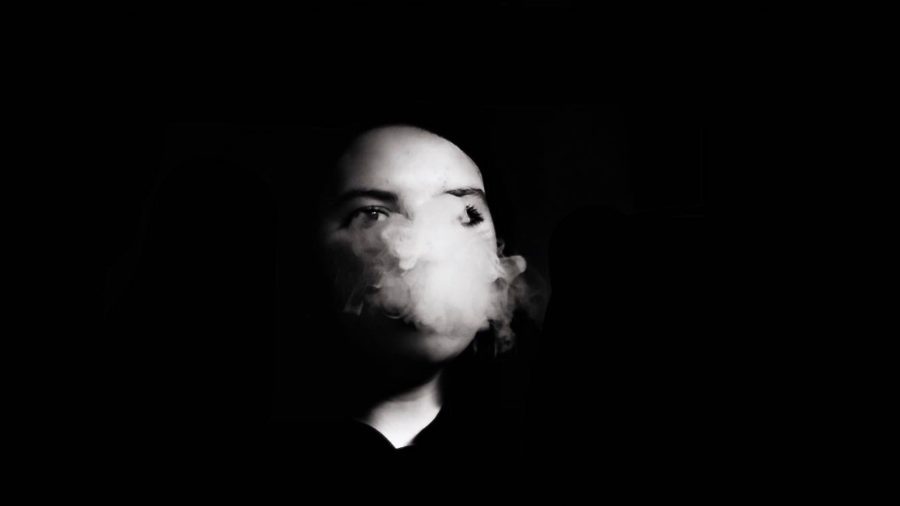Millions of thoughts parade across your conscience. Your heart begins to pound. The slim black device sits on top of your homework. You hear it echoing your name. You reach for your addiction. As you inhale your escape, a cloud of stress exits your mouth.
Substance abuse has unraveled into an epidemic among teenagers, becoming a habitual normality for a majority of high school students, regardless of the different communities they may come from.
“Alcohol, nicotine, and marijuana are everywhere in high school,” said Mason Palacios*, a senior at Carlmont. “If you do not do it yourself, then you have most likely been around it.”
Society has altered individuals’ perspectives into a biased mindset which leads them to believe in certain stereotypes concerning teenage drug use.
“There is definitely a stereotype that lower income communities use drugs more because a majority of wealthy people view themselves as superior,” said Sophia Campbell, a sophomore at Carlmont. “In reality, no matter where you go there is going to be drug use in every high school.”
The common misconception that higher income communities, such as San Carlos or Palo Alto, utilize drugs less than lower-income neighborhoods is false. According to STD Fourth World, it is proven that people in poverty do not use drugs at a higher rate than those who are wealthy.
The underlying truth is substance and drug use is an inevitable reality at every high school. However, the reasoning behind why these toxins are used varies between teenagers and the culture of their communities.
“Life is naturally more difficult when one is unwillingly spawned from birth into a lower financial bracket,” said Alex Moriarty, a sophomore at Carlmont.
As conceptualized by English philosopher John Locke, one only knows what one has gone through. The ability to fully conceptualize the idea of another lifestyle is made impossible since one has only experienced a life of their own which varies drastically from the way of life in another community.
“In what we see today, students coming from environments where drug abuse and violence is common will only know a life of drug abuse and violence unless knowledge of outer, more promising realms are introduced,” Moriarty said.
Students in places like East Palo Alto (EPA) might select drugs for an emotional escape from the worries that accompany financial instability.
According to Neighborhood Scout, EPA has a violent crime rate that is 50 percent higher than other cities in the state. This community also holds a median household income of nearly $55,000 in contrast to San Carlos, with a median of $125,747. The chances of being a victim of violent crime in EPA is 1 in 245, whereas in San Carlos, it is 1 in 903.
This causes stress among lower-income families who are trying to manage their families under the pressures of violence and economic difficulties which people in San Carlos endure less frequently.
“My mom is a single parent raising four kids,” Parsia Shakib* a freshman from EPA said. “Her stress becomes my stress, and it is too much, so sometimes I’ll smoke [marijuana].”
According to NIDA for teenagers, those who have tried smoking marijuana are likely to continue the habit, as they grow accustomed to the feeling of relief they get. The negative side effects of marijuana include reduced school performance, lessened life satisfaction, impaired driving, use of other drugs, or severe nausea.
In juxtaposition to lower-income communities, students in higher income high schools, like Carlmont, suggest a various rationale for using drugs or other harmful substances.
“Many students in environments like San Carlos have parents who have prospered financially and can simply rely on family wealth, neglecting school work and proper responsibilities while drugs grasp hold of them. [In contrast to this,] one may be pressured to do drugs in order to achieve relief from the relentless pressure from both their school environment and possibly their home environment,” Moriarty said. “Situational extremities, such as these scenarios, are almost guaranteed to result detrimental to the student experiencing them, and influence their decision making poorly.”
The rising academic competition at certain schools, especially in the Bay Area, poses another factor contributing to substance abuse.
“The amount of stress in school causes kids to turn to an unhealthy way of coping because they are just trying to get through all the pressure,” said Lexi Behrens, a junior at Woodside.
On top of school stress, many teenagers experiment with drugs and alcohol through influence from their peers and popular culture.
“My friends influenced me to start, but then I realized it was a way to help me get away from my problems, and I guess it was fun,” said John Anderson*, a sophomore at Carlmont.
Peer pressure puts a massive strain on students to fit in since differences can be perceived as a threat, which is why a majority of teenagers try to blend in. According to Broadly, the teenage brain is constantly obsessing over what others are thinking. High school can be a difficult time since students are beginning to discover more about themselves and the pressure to please others weighs in as well.
“At Woodside, there are a lot of the kids who smoke and drink, so students feel peer pressured to fit in or just want to be cool,” Behrens said.
Since teenagers undergo an immense social pressure to fit into their community, they are trapped in an environment where drugs are the norm.
“People think things like Juuling makes them cooler,” said Julia Smith*, a freshman at Burlingame High School. “Everybody just wants to be the same.”
Juuling, which is skyrocketing in popularity, is promoted through social media. A Juul is a type of e-cigarette that contains nicotine salts that exist in leaf-based tobacco. These illegal substances are often popularized through ads, and because of this, the availability to underage users increases.
“Social media is one of the gateways to drugs which so many teenagers have access to,” said Claire Davis*, a sophomore at Carlmont. “It has connected them to a whole new world which promotes drugs.”
The National Institute on Drug Abuse collected a stream of studies revealing seven in ten teenagers are exposed to E-Cigs (Juuls) through media advertisement. Within six months of these teenagers using E-Cigs, nearly 30 percent of them started smoking tobacco.
Many high schoolers begin vaping without being aware of the addictive chemicals they are inhaling. According to the NIDA, 66 percent of users thought they were simply inhaling flavors, and nearly 14 percent claimed they did not know what they were inhaling.
“When I tried Juuling for the first time, I did not think about what was in it,” said Justin Ramirez*, a junior from Menlo Atherton. “It tasted like candy so I kept using it.”
The underlying reality is that substance use has unraveled into a micro-culture among teenagers in high school. The reasons seem to range from one’s environment to one’s emotional state.
“I don’t think teenagers will ever stop using alcohol, marijuana, and nicotine,” said Haider Abadi*, a sophomore from Aragon. “It has become inevitable, and no one can change the fact that it has become part of high school culture.”
*these names, which have been verified by editors, have been changed to protect anonymity and will be kept confidential.


